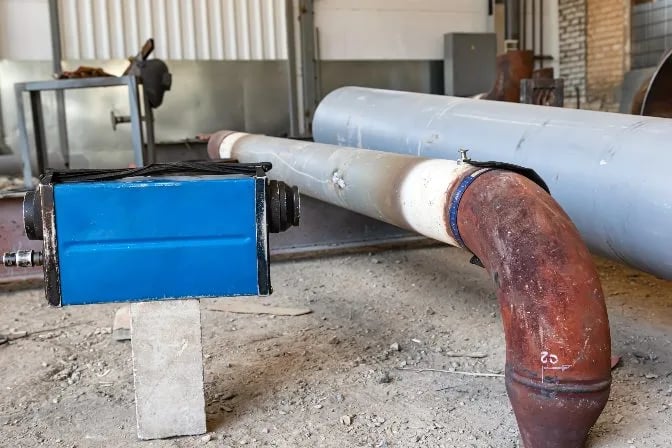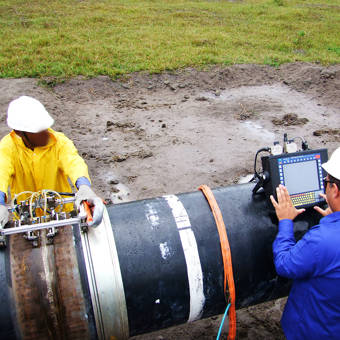Comprehensive Summary of Pipeline Welding Examination Treatments
Pipeline welding evaluation treatments play a critical role in assuring that bonded links meet stringent market requirements and requirements. From precise pre-welding inspections to detailed post-weld evaluations, a distinct inspection procedure is essential for keeping the structural strength of pipelines.
Pre-welding Examination Preparations
Before commencing the welding process, detailed pre-welding examination preparations are necessary to make sure the stability and high quality of the weld joint. These preparations entail a meticulous evaluation of the materials to be welded, the welding equipment, and the job setting. By performing comprehensive pre-welding examination preparations, potential problems can be determined and settled early on, leading to top notch and trustworthy weld joints.
Welding Procedure Credentials
Extensive pre-welding inspection prep work lay the foundation for the essential process of Welding Treatment Qualification, making certain the stability and top quality of the weld joint. Welding Procedure Credentials (WPQ) is a vital action in the welding process that includes screening and certifying welding treatments to guarantee they satisfy details standards and demands. The WPQ procedure usually consists of welding procedure spec growth, welding treatment qualification screening, and documents of the results.
During welding treatment requirements development, necessary information such as the welding process, welding materials, joint style, and welding criteria are specified to create an extensive treatment. Ultimately, welding treatment qualification testing is carried out to confirm the recommended treatment's integrity. This testing typically includes welding examination promo codes that are subjected to various mechanical and non-destructive examinations to assess the weld's quality and adherence to the specified standards.
In-process Weld Inspection
During the welding process, in-process weld evaluation plays an important function in making sure the top quality and honesty of the weld joint - Pipeline Welding Inspection. This sort of evaluation includes monitoring the welding parameters, evaluating the weld bead formation, and spotting any potential problems or suspensions as they occur. By conducting in-process weld inspections, welding drivers can without delay resolve any kind of problems that may occur, thereby preventing more issues and making sure that the last weld satisfies the required requirements
Common techniques made use of for in-process weld evaluation consist of aesthetic inspection, fluid penetrant screening, magnetic fragment testing, ultrasonic testing, and radiographic screening. Overall, in-process weld assessment is crucial for maintaining the high quality and reliability of bonded pipes.
Non-destructive Screening (NDT)
Non-destructive Screening (NDT) is a vital technique used in pipe description welding assessment to analyze the honesty of weld joints without triggering damages to the bonded framework. By using different NDT methods, assessors can assess the quality of welds and identify any type of flaws or interruptions that may jeopardize the architectural sturdiness of the pipe. Common NDT methods used in pipeline welding evaluation include Radiographic Testing (RT), Ultrasonic Testing (UT), Magnetic Bit Evaluating (MPT), Liquid Penetrant Testing (LPT), and Visual Testing (VT)
RT includes the use of X-rays or gamma rays to produce images of the internal framework of the weld, enabling inspectors to detect issues such as porosity, fractures, or incomplete combination. Furthermore, VT entails visual evaluation of welds to identify any kind of visible blemishes.
Post-weld Assessment and Paperwork

Paperwork of post-weld inspection searchings for is important for keeping high quality control documents and making sure compliance with market requirements and laws. Detailed reports must consist of info about the inspection methods utilized, the place and get more nature of any type of defects found, and any kind of rehabilitative actions taken - Pipeline Welding Inspection. Correct documents not only acts as a record of the weld's quality yet likewise aids in future upkeep and evaluation procedures
Verdict

In final thought, pipeline welding assessment treatments play a crucial role in guaranteeing the top quality and integrity of welds. Generally, adherence to proper inspection methods is essential to the success of pipeline welding jobs.
From careful pre-welding assessments to detailed post-weld analyses, a distinct assessment procedure is necessary for preserving the structural stability of pipelines. By conducting in-process weld inspections, welding drivers can without delay resolve any kind of problems that may arise, thereby guaranteeing and avoiding further issues that the last weld fulfills the called for specs.
Common approaches utilized for in-process weld evaluation include aesthetic evaluation, fluid penetrant screening, magnetic particle screening, ultrasonic testing, and radiographic screening.Non-destructive Screening (NDT) is a vital method used in pipeline welding examination to examine the integrity of weld joints without creating damage to the bonded structure. Post-weld examination includes various techniques to assess the welds for flaws, including aesthetic inspection, color penetrant testing, magnetic bit testing, ultrasonic testing, and radiographic screening.